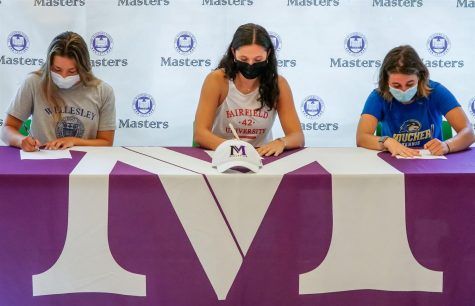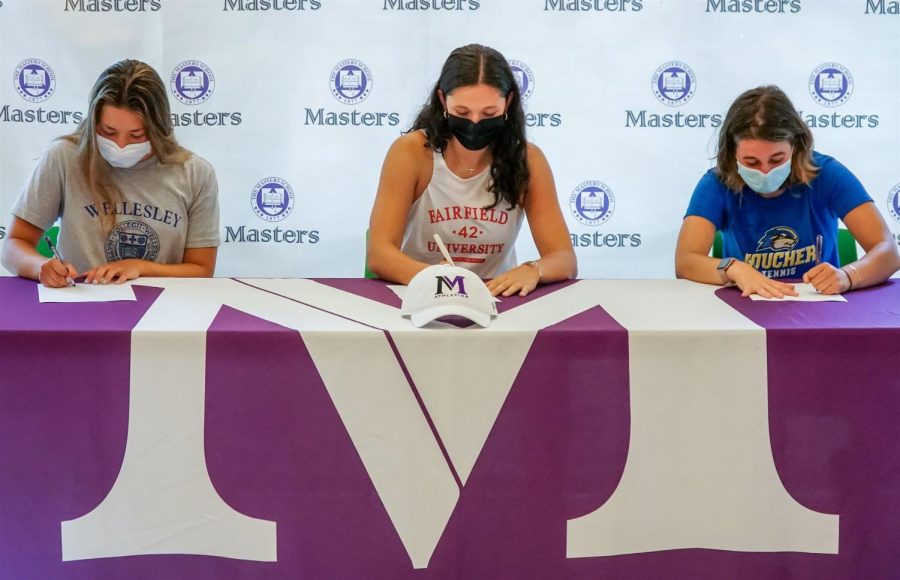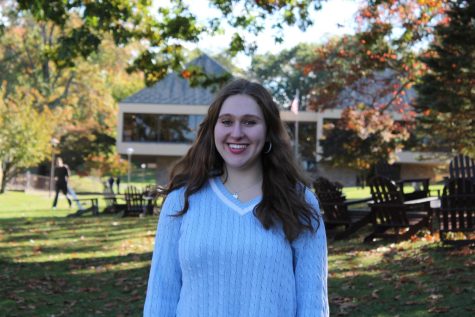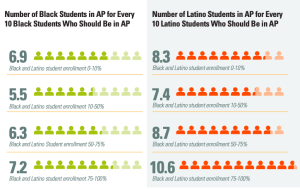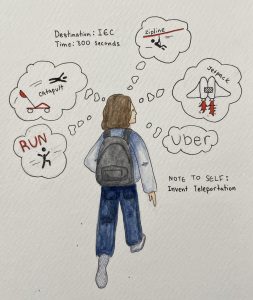The recruiting process can be long – and even a little brutal
November 19, 2021
About 7% of high school athletes go on to play a varsity sport once they enter college. Less than 2% of high school athletes go on to play at NCAA Division I schools according to NCAA. The few athletes that make it to the college level endure a long and rigorous process when committing to play their sport. College coaches recruit by seeking out potential high school athletes to fill their rosters. At academically selective colleges, coaches recruit athletes with strong athletic ability as well as good grades and test scores. Some coaches recruit based on the specific needs of their team. Verbal commitments start as soon as 7th grade, but are usually offered during an athlete’s junior year.
Dakota Daniello ‘23 verbally committed to play basketball at Florida Southern College during the summer of her sophomore year.
“I started actually talking to different college coaches in 8th grade and I started talking to the school I am committed to now, in 9th grade, “ Daniello explained. “We had been emailing back and forth about scheduling for games, where she [the recruiter] can watch me online and things like that,” Daniello said. “From there I talked to her on a regular basis… We talked about basketball, her team, and other random things. After a while we built a relationship and ended up clicking.”
In the early stages of the recruitment process, coaches identify a large number of athletes who meet key requirements, including height, position, age, and academic level. The college coaches typically send out recruiting letters/questionnaires to learn more about the applicant and gauge their interest. Coaches further evaluate prospects on a range of criteria. Coaches often get in touch with the athlete’s current coach, either in their high school or club. Recruitment rules vary between different sports and universities.
“For basketball, I could start talking to coaches whenever I wanted, but before junior year, you have to do everything through your high school coach. When you want to set up a phone call with a college coach, you have to text your travel coach who will coordinate due to NCAA recruiting rules,” said Daniello. Connections between coaches proved useful to gain access and elevate her play.
Junior Sabine Godwin recently committed to John Hopkins Lacrosse and had a similar experience. “My coaches did a lot for me during the commitment process. They would work with [college]coaches who were unsure about me as a player or a person. They also would talk to the college coaches to evaluate the recruiting process and they would tell you everything. It can even be a little brutal at times.” Godwin continued, “There are a lot of tears in this process”
At this point, college coaches might travel to games, tournaments or showcases to evaluate their possible recruits. Then, they reach out to the athletes and send invitations to visit their program. As coaches build their list, official and unofficial visits occur. The coach’s list will rank up to 300 athletes, depending on the sport and division level. Coaches make offers to their top candidates. There are several different kinds of offers. Verbal offers/commitments are non-binding, meaning the coach or the athlete can back out at any time. Offers are formally finalized with the student in their senior year of high school. Godwin ‘23 verbally committed to JHU, but will officially sign her letter next year. According to Godwin, coaches could start contacting members on September 1st, as they entered their junior year.
“Up until then and during the summer before, you are spending your time at clinics and showcases, playing in front of college coaches so you can be seen. You usually send them weekly emails: where you’re going to be and who you are going to play,” Godwin said
To officially commit, student athletes typically sign a National Letter of Intent in the fall of their senior year. In order to make it to this step, the athlete must maintain their academic performance. Student-athletes generally keep to a strict timeline during the recruitment process. 9th grade is typically spent researching, which includes researching different programs and division levels as well as understanding the NCAA recruiting rules. During 10th grade, athletes usually build their athletic resume or online profile. This contains their recruiting videos along with other critical information. Athletes in the 11th grade make a list of about 30-40 schools that interest them. Contact between the college coach and the athlete also begins. Though this is the typical timeline, the commitment process is different for each athlete and will vary.
Covid-19 has limited face-to-face contact between coaches and recruits, altering the recruitment process and creating additional obstacles. Godwin experienced what is called a “dead period” during the fall of 2020. During this time there was no contact with coaches and no coaches could watch the athletes play in person.
“That was a really big deal. They could only watch players online,” said Godwin
Recruitment is a reciprocal process. Coaches evaluate the potential of athletes. Students consider the suitability of the school. When both sides come to agreement the requirement process is complete.“Student athletes have a unique opportunity. I look forward to joining the team once I get to college,” said Daniello.
